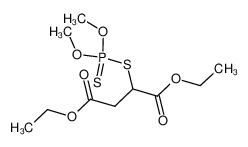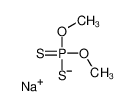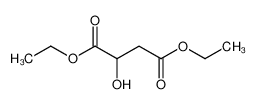| Product name | malathion |
|---|
| Product number | - |
|---|---|
| Other names | mercaptothion |
| Identified uses | For industry use only. Organophosphates and carbamates |
|---|---|
| Uses advised against | no data available |
| Company | MOLBASE (Shanghai) Biotechnology Co., Ltd. |
|---|---|
| Address | Floor 4 & 5, Building 12, No. 1001 North Qinzhou Road, Xuhui District, Shanghai, China |
| Telephone | +86(21)64956998 |
| Fax | +86(21)54365166 |
| Emergency phone number | +86-400-6021-666 |
|---|---|
| Service hours | Monday to Friday, 9am-5pm (Standard time zone: UTC/GMT +8 hours). |
Acute toxicity - Oral, Category 4
Skin sensitization, Category 1
Hazardous to the aquatic environment, short-term (Acute) - Category Acute 1
Hazardous to the aquatic environment, long-term (Chronic) - Category Chronic 1
2.2 GHS label elements, including precautionary statements| Pictogram(s) |   |
|---|---|
| Signal word | Warning |
| Hazard statement(s) | H302 Harmful if swallowed H317 May cause an allergic skin reaction H410 Very toxic to aquatic life with long lasting effects |
| Precautionary statement(s) | |
| Prevention | P264 Wash ... thoroughly after handling. P270 Do not eat, drink or smoke when using this product. P261 Avoid breathing dust/fume/gas/mist/vapours/spray. P272 Contaminated work clothing should not be allowed out of the workplace. P280 Wear protective gloves/protective clothing/eye protection/face protection. P273 Avoid release to the environment. |
| Response | P301+P312 IF SWALLOWED: Call a POISON CENTER/doctor/…if you feel unwell. P330 Rinse mouth. P302+P352 IF ON SKIN: Wash with plenty of water/... P333+P313 If skin irritation or rash occurs: Get medical advice/attention. P321 Specific treatment (see ... on this label). P362+P364 Take off contaminated clothing and wash it before reuse. P391 Collect spillage. |
| Storage | none |
| Disposal | P501 Dispose of contents/container to ... |
none
3.Composition/information on ingredients 3.1 Substances| Chemical name | Common names and synonyms | CAS number | EC number | Concentration |
|---|---|---|---|---|
| malathion | malathion | 121-75-5 | none | 100% |
Consult a physician. Show this safety data sheet to the doctor in attendance.
If inhaledFresh air, rest. Half-upright position. Refer for medical attention.
In case of skin contactRemove contaminated clothes. Rinse and then wash skin with water and soap. Refer for medical attention .
In case of eye contactFirst rinse with plenty of water for several minutes (remove contact lenses if easily possible), then refer for medical attention.
If swallowedRinse mouth. Give a slurry of activated charcoal in water to drink. Rest. Refer for medical attention .
4.2 Most important symptoms/effects, acute and delayedExposure to fumes from a fire or to liquid causes headache, blurred vision, constricted pupils of the eyes, weakness, nausea, cramps, diarrhea, and tightness in the chest. Muscles twitch and convulsions may follow. The symptoms may develop over a period of 8 hours. (USCG, 1999)
4.3 Indication of immediate medical attention and special treatment needed, if necessaryIf this chemical gets into the eyes, remove any contact lenses at once and irrigate immediately for at least 15 min, occasionally lifting upper and lower lids. Seek medical attention immediately. If this chemical contacts the skin, remove contaminated clothing and wash immediately with soap and water. Speed in removing material from skin is of extreme importance. Shampoo hair promptly if contaminated. Seek medical attention immediately. If this chemical has been inhaled, remove from exposure, begin rescue breathing (using universal precautions, including resuscitation mask) if breathing has stopped and CPR if heart action has stopped. Transfer promptly to a medical facility.
5.Fire-fighting measures 5.1 Extinguishing media Suitable extinguishing mediaSuitable extinguishing media: Use water spray, alcohol-resistant foam, dry chemical or carbon dioxide.
5.2 Specific hazards arising from the chemicalSpecial Hazards of Combustion Products: Vapors and fumes from fires are hazardous. They include sulfur dioxide and phosphoric acid. Behavior in Fire: Gives off hazardous fumes. Area surrounding fire should be diked to prevent water runoff. (USCG, 1999)
5.3 Special protective actions for fire-fightersWear self-contained breathing apparatus for firefighting if necessary.
6.Accidental release measures 6.1 Personal precautions, protective equipment and emergency proceduresUse personal protective equipment. Avoid dust formation. Avoid breathing vapours, mist or gas. Ensure adequate ventilation. Evacuate personnel to safe areas. Avoid breathing dust. For personal protection see section 8.
6.2 Environmental precautionsPersonal protection: filter respirator for organic gases and vapours adapted to the airborne concentration of the substance. Do NOT let this chemical enter the environment. Collect leaking and spilled liquid in sealable containers as far as possible. See Chemical Dangers. Absorb remaining liquid in sand or inert absorbent. Then store and dispose of according to local regulations.
6.3 Methods and materials for containment and cleaning upACCIDENTAL RELEASE MEASURES: Personal precautions, protective equipment and emergency procedures: Use personal protective equipment. Avoid breathing vapors, mist or gas. Ensure adequate ventilation. Environmental precautions: Prevent further leakage or spillage if safe to do so. Do not let product enter drains. Discharge into the environment must be avoided. Methods and materials for containment and cleaning up: Soak up with inert absorbent material and dispose of as hazardous waste. Keep in suitable, closed containers for disposal.
7.Handling and storage 7.1 Precautions for safe handlingAvoid contact with skin and eyes. Avoid formation of dust and aerosols. Avoid exposure - obtain special instructions before use.Provide appropriate exhaust ventilation at places where dust is formed. For precautions see section 2.2.
7.2 Conditions for safe storage, including any incompatibilitiesStore in an area without drain or sewer access. Separated from strong oxidants and food and feedstuffs. Keep in a well-ventilated room.Keep container tightly closed in a dry and well-ventilated place. Containers which are opened must be carefully resealed and kept upright to prevent leakage. Recommended storage temperature 2 - 8°C
8.Exposure controls/personal protection 8.1 Control parameters Occupational Exposure limit valuesRecommended Exposure Limit: 10 Hour Time-Weighted Average: 10 mg/cu m. Skin.
Biological limit valuesno data available
8.2 Appropriate engineering controlsHandle in accordance with good industrial hygiene and safety practice. Wash hands before breaks and at the end of workday.
8.3 Individual protection measures, such as personal protective equipment (PPE) Eye/face protectionSafety glasses with side-shields conforming to EN166. Use equipment for eye protection tested and approved under appropriate government standards such as NIOSH (US) or EN 166(EU).
Skin protectionWear impervious clothing. The type of protective equipment must be selected according to the concentration and amount of the dangerous substance at the specific workplace. Handle with gloves. Gloves must be inspected prior to use. Use proper glove removal technique(without touching glove's outer surface) to avoid skin contact with this product. Dispose of contaminated gloves after use in accordance with applicable laws and good laboratory practices. Wash and dry hands. The selected protective gloves have to satisfy the specifications of EU Directive 89/686/EEC and the standard EN 374 derived from it.
Respiratory protectionWear dust mask when handling large quantities.
Thermal hazardsno data available
9.Physical and chemical properties| Physical state | Deep Brown to Yellow Liquid |
|---|---|
| Colour | Colorless or slightly yellow |
| Odour | Skunk-like odor |
| Melting point/ freezing point | 2.85ºC |
| Boiling point or initial boiling point and boiling range | 156ºC |
| Flammability | Class IIIB Combustible Liquid: Fl.P. at or above 93.33°C., but may be difficult to ignite.Combustible. Liquid formulations containing organic solvents may be flammable. Gives off irritating or toxic fumes (or gases) in a fire. |
| Lower and upper explosion limit / flammability limit | no data available |
| Flash point | 186.7ºC |
| Auto-ignition temperature | no data available |
| Decomposition temperature | no data available |
| pH | no data available |
| Kinematic viscosity | no data available |
| Solubility | In water:0.0145 g/100 mL |
| Partition coefficient n-octanol/water (log value) | no data available |
| Vapour pressure | 3.9E-06mmHg at 25°C |
| Density and/or relative density | 1.2076 |
| Relative vapour density | (air = 1): 11.4 |
| Particle characteristics | no data available |
no data available
10.2 Chemical stabilityStable under recommended storage conditions.
10.3 Possibility of hazardous reactionsMalathion is combustible but ignites with difficulty.MALATHION is a yellow to brown liquid that solidifies at 2.9° C, moderately toxic. Organic phosphate insecticide, acts as an inhibitor of cholinesterase. When heated to decomposition it emits toxic fumes of oxides of sulfur and phosphorus [Lewis, 3rd ed., 1993, p. 789].
10.4 Conditions to avoidno data available
10.5 Incompatible materialsIncompatible materials: Strong oxidizing agents. Corrodes metal.
10.6 Hazardous decomposition productsHazardous decomposition products formed under fire conditions - Carbon oxides, sulfur oxides, oxides of phosphorus
11.Toxicological information Acute toxicity- Oral: LD50 Mouse oral 1025 mg/kg
- Inhalation: LC50 Rat inhalation 43,790 ug/cu m/4 hr
- Dermal: no data available
no data available
Serious eye damage/irritationno data available
Respiratory or skin sensitizationno data available
Germ cell mutagenicityno data available
CarcinogenicityCancer Classification: Suggestive Evidence of Carcinogenicity, but Not Sufficient to Assess Human Carcinogenic Potential
Reproductive toxicityno data available
STOT-single exposureno data available
STOT-repeated exposureno data available
Aspiration hazardno data available
12.Ecological information 12.1 Toxicity- Toxicity to fish: LC50; Species: Salmo trutta (Brown trout) weight 1.1 g; Conditions: static bioassay, 12°C; Concentration: 101 ug/L for 96 hr (95% confidence limit: 84-115 ug/L) /Technical, 95%
- Toxicity to daphnia and other aquatic invertebrates: LC50; Species: Daphnia magna (Water Flea) neonate; Conditions: freshwater, static; Concentration: 16.81 ug/L for 24 hr />95% purity
- Toxicity to algae: EC50; Species: Pseudokirchneriella subcapitata (Green Algae) initial cell density was 15,000; Conditions: freshwater, static, 24°C, pH 7.5, dissolved oxygen 1 to 3 mg/L; Concentration: 2320 ug/L for 48 hr; Effect: growth, cell density
- Toxicity to microorganisms: no data available
AEROBIC: Malathion, present at 100 mg/L, reached 22% of its Theoretical BOD in 4 weeks using an activated sludge inoculum at 30 mg/L in the Japanese MITI test(1). Malathion is rapidly degraded in soils with reported degradation in 10 days in various non sterile (sterile) loam soils: 92% (8%), 94% (5%), and 81% (19%)(2). Biochemical reactions utilized include desulfuration, oxidation, hydrolysis, transfer of alkyl or aryl groups, alkylation, dealkylation, reduction and conjugation(2). The rate of degradation increased with increasing soil organic matter and was related to soil pH(3). C14-Malathion was biodegraded 50% and 10% after 17 days in clay loam (45.3% sand, 19.7% silt, 35% clay, 5.74% organic matter) and sandy soil (74.74% sand, 24.76% silt, 0.5% clay, 1.9% organic matter), respectively(4). In activated sludge, malathion had a first-order degradation rate of 0.161/hr(8). In raw river water (pH 7.3-8.0), malathion was degraded 90% within 2 weeks, no change was observed in distilled water over 3 weeks suggesting that degradation was biological(5). Degradation of malathion was complete in 3 days in non-sterile estuarine sediments, and 57% in 11 days in sterilized sediment(6). Malathion has a first-order degradation rate of 0.902/day and a half-life of 0.8 days under aerobic conditions, under anaerobic conditions a first-order degradation rate of 0.302/day and a half-life of 2.3 days were reported in sediment from San Diego Creek, CA(7). Products of degradation include alpha and beta monocarboxylic acids (major metabolite in soil), and dicarboxylic acid(9).
12.3 Bioaccumulative potentialMalathion did not bioconcentrate in the freshwater fish topmouth gudgeon (Pseudorasbora parva)(1). No detectable concentration of malathion was observed in pinfish (Lagodon sp) after exposure to 20-75 ug/L(2). Malathion undergoes biotransformation in fish with some of the metabolites being malaoxon, malathion monoacid, malathion diacid, O,O-dimethyl phosphorodithioate, O,O-dimethyl phosphorodithiolate, O,O-dimethyl phosphorodithionate and O,O-dimethylphosphate(2). Based on the rapid metabolism, bioconcentration of malathion in aquatic organisms is expected to be low(SRC). The BCF for egg masses of the Triaenodes tardus (caddisfly) was found to be 10(3). Malathion had BCFs of 3.0, 23 and 1.2 in axenically cultured parrot feather (Myriophyllum aquaticum), duckweed (Spirodela oligorrhiza L) and elodea (Elodea canadensis), respectively(4).
12.4 Mobility in soilThe Koc of malathion was determined 26 times in a field study conducted with five applications at a 10 day interval in a lychee orchard in northern Thailand; Koc values were reported as 927-17,620(1). Other reported Koc values of malathion in soil are 1175(2), 1200(3) and 1800(4). According to a classification scheme(5), these Koc values suggest that malathion is expected to have low to no mobility in soil(SRC). An experiment conducted to see how much malathion leaches at depths of 50 cm in soil found that most of the malathion is degraded in the higher layers of soil (within the polar carboxylic acid groups) and only small degradation products, that are usually biodegradable, move to the groundwater(6).
12.5 Other adverse effectsno data available
13.Disposal considerations 13.1 Disposal methods ProductThe material can be disposed of by removal to a licensed chemical destruction plant or by controlled incineration with flue gas scrubbing. Do not contaminate water, foodstuffs, feed or seed by storage or disposal. Do not discharge to sewer systems.
Contaminated packagingContainers can be triply rinsed (or equivalent) and offered for recycling or reconditioning. Alternatively, the packaging can be punctured to make it unusable for other purposes and then be disposed of in a sanitary landfill. Controlled incineration with flue gas scrubbing is possible for combustible packaging materials.
14.Transport information 14.1 UN Number| ADR/RID: UN2783 | IMDG: UN2783 | IATA: UN2783 |
| ADR/RID: ORGANOPHOSPHORUS PESTICIDE, SOLID, TOXIC |
| IMDG: ORGANOPHOSPHORUS PESTICIDE, SOLID, TOXIC |
| IATA: ORGANOPHOSPHORUS PESTICIDE, SOLID, TOXIC |
| ADR/RID: 6.1(b) | IMDG: 6.1(b) | IATA: 6.1(b) |
| ADR/RID: III | IMDG: III | IATA: III |
| ADR/RID: yes | IMDG: yes | IATA: yes |
no data available
14.7 Transport in bulk according to Annex II of MARPOL 73/78 and the IBC Codeno data available
15.Regulatory information 15.1 Safety, health and environmental regulations specific for the product in question| Chemical name | Common names and synonyms | CAS number | EC number |
|---|---|---|---|
| malathion | malathion | 121-75-5 | none |
| European Inventory of Existing Commercial Chemical Substances (EINECS) | Listed. | ||
| EC Inventory | Listed. | ||
| United States Toxic Substances Control Act (TSCA) Inventory | Not Listed. | ||
| China Catalog of Hazardous chemicals 2015 | Listed. | ||
| New Zealand Inventory of Chemicals (NZIoC) | Listed. | ||
| Philippines Inventory of Chemicals and Chemical Substances (PICCS) | Listed. | ||
| Vietnam National Chemical Inventory | Listed. | ||
| Chinese Chemical Inventory of Existing Chemical Substances (China IECSC) | Listed. | ||
| Creation Date | Aug 19, 2017 |
|---|---|
| Revision Date | Aug 19, 2017 |
- CAS: Chemical Abstracts Service
- ADR: European Agreement concerning the International Carriage of Dangerous Goods by Road
- RID: Regulation concerning the International Carriage of Dangerous Goods by Rail
- IMDG: International Maritime Dangerous Goods
- IATA: International Air Transportation Association
- TWA: Time Weighted Average
- STEL: Short term exposure limit
- LC50: Lethal Concentration 50%
- LD50: Lethal Dose 50%
- EC50: Effective Concentration 50%
- IPCS - The International Chemical Safety Cards (ICSC), website: http://www.ilo.org/dyn/icsc/showcard.home
- HSDB - Hazardous Substances Data Bank, website: https://toxnet.nlm.nih.gov/newtoxnet/hsdb.htm
- IARC - International Agency for Research on Cancer, website: http://www.iarc.fr/
- eChemPortal - The Global Portal to Information on Chemical Substances by OECD, website: http://www.echemportal.org/echemportal/index?pageID=0&request_locale=en
- CAMEO Chemicals, website: http://cameochemicals.noaa.gov/search/simple
- ChemIDplus, website: http://chem.sis.nlm.nih.gov/chemidplus/chemidlite.jsp
- ERG - Emergency Response Guidebook by U.S. Department of Transportation, website: http://www.phmsa.dot.gov/hazmat/library/erg
- Germany GESTIS-database on hazard substance, website: http://www.dguv.de/ifa/gestis/gestis-stoffdatenbank/index-2.jsp
- ECHA - European Chemicals Agency, website: https://echa.europa.eu/




























